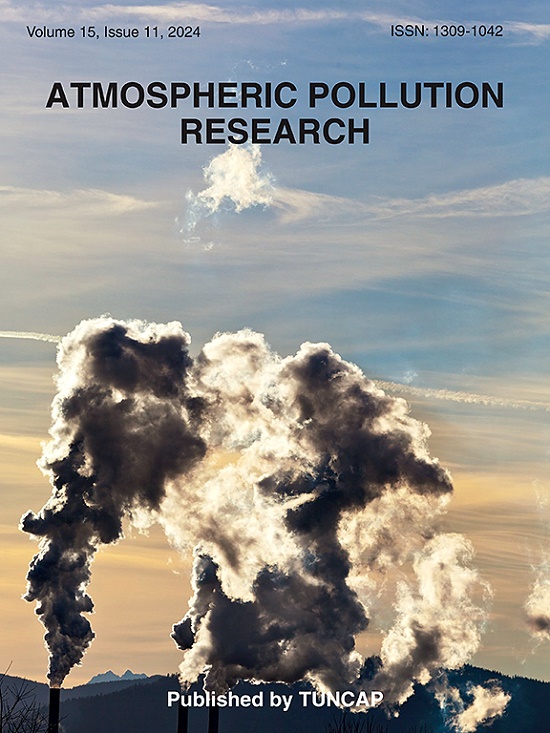Effects of straw and straw-derived biochar applications with equivalent straw input on ammonia volatilization and N leaching in an alternate wetting and drying paddy ecosystem
IF 3.9
3区 环境科学与生态学
Q2 ENVIRONMENTAL SCIENCES
引用次数: 0
Abstract
Contrasting effects of straw and biochar with equivalent straw input on ammonia volatilization and N leaching under alternate wetting and drying irrigation (IAWD) in paddy ecosystems are limited. A 2-yr paddy buried pot experiment was conducted with annual rice straw and single biochar applications with equivalent straw input under continuously flooded irrigation (ICF) and IAWD. Four treatments comprising no amendment under ICF (ICFA0), no amendment under IAWD (IAWDA0), rice straw (29.41 t ha−1 yr−1) under IAWD (IAWDAS) and biochar (20 t ha−1 applied once) under IAWD (IAWDAB) were arranged in a randomized complete block design. IAWD did not significantly alter ammonia volatilization, but increased N leaching. Compared with ICFA0 and IAWDA0, IAWDAS significantly increased ammonia volatilization by 7.92–52.71% and decreased yield by 22.98–31.87% in both years, but increased N leaching by 31.18% in 2021 only. IAWDAB increased ammonia volatilization, N leaching and reactive N losses in 2021 but significantly decreased reactive N losses in 2022 compared with no amendment. IAWDAB reduced grain yield due to the increased reactive N losses in 2021. Both IAWDAS and IAWDAB improved soil total N. IAWDAB had higher yield and N uptake, and lower reactive N losses than IAWDAS. Overall, biochar is a more effective strategy for reducing reactive N losses in IAWD paddy systems over time. Direct straw return could take longer for its decomposition or be annually applied at a lower rate to address its higher reactive N losses and lower grain yield after a 2-yr consecutive annual application.

等量秸秆投入量下施用秸秆和秸秆生物炭对干湿交替稻田生态系统氨挥发和氮淋溶的影响
在干湿交替灌溉条件下,秸秆与生物炭对水稻生态系统氨挥发和氮淋溶的影响比较有限。在连续淹水灌溉(ICF)和IAWD条件下,采用等量秸秆投入量,每年施用秸秆和单一生物炭,进行了2年水稻埋盆试验。采用完全随机区组设计,采用ICF (ICFA0)、IAWDA0 (IAWDA0)、IAWD (IAWDAS)和IAWD (IAWDAB)处理,分别为水稻秸秆(29.41 t ha - 1 yr - 1)和生物炭(20 t ha - 1)。IAWD对氨挥发没有显著影响,但增加了N淋失。与ICFA0和IAWDA0相比,IAWDAS在两年内显著增加了7.92 ~ 52.71%的氨挥发,降低了22.98 ~ 31.87%的产量,但仅在2021年增加了31.18%的N淋溶。IAWDAB在2021年增加了氨挥发、氮淋溶和活性氮损失,但在2022年显著降低了活性氮损失。由于2021年活性氮损失增加,IAWDAB降低了粮食产量。IAWDAS和IAWDAB均能提高土壤全氮,IAWDAB产量和氮素吸收量均高于IAWDAS,活性氮损失低于IAWDAS。总体而言,随着时间的推移,生物炭是减少IAWD水稻系统反应性氮损失的更有效策略。秸秆直接还田可延长其分解时间,或每年施用较低的还田率,以解决其较高的活性氮损失和连续2年后籽粒产量较低的问题。
本文章由计算机程序翻译,如有差异,请以英文原文为准。
求助全文
约1分钟内获得全文
求助全文
来源期刊

Atmospheric Pollution Research
ENVIRONMENTAL SCIENCES-
CiteScore
8.30
自引率
6.70%
发文量
256
审稿时长
36 days
期刊介绍:
Atmospheric Pollution Research (APR) is an international journal designed for the publication of articles on air pollution. Papers should present novel experimental results, theory and modeling of air pollution on local, regional, or global scales. Areas covered are research on inorganic, organic, and persistent organic air pollutants, air quality monitoring, air quality management, atmospheric dispersion and transport, air-surface (soil, water, and vegetation) exchange of pollutants, dry and wet deposition, indoor air quality, exposure assessment, health effects, satellite measurements, natural emissions, atmospheric chemistry, greenhouse gases, and effects on climate change.
 求助内容:
求助内容: 应助结果提醒方式:
应助结果提醒方式:


